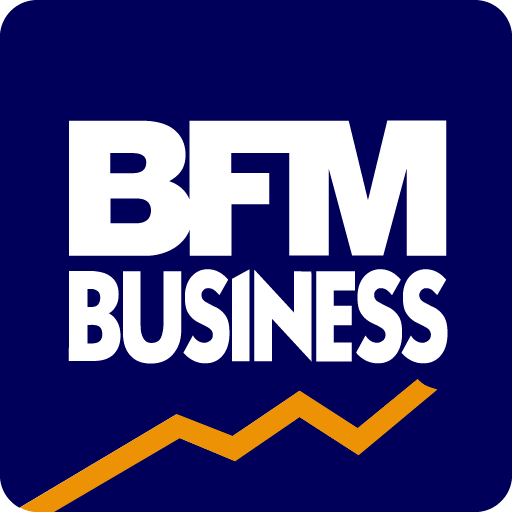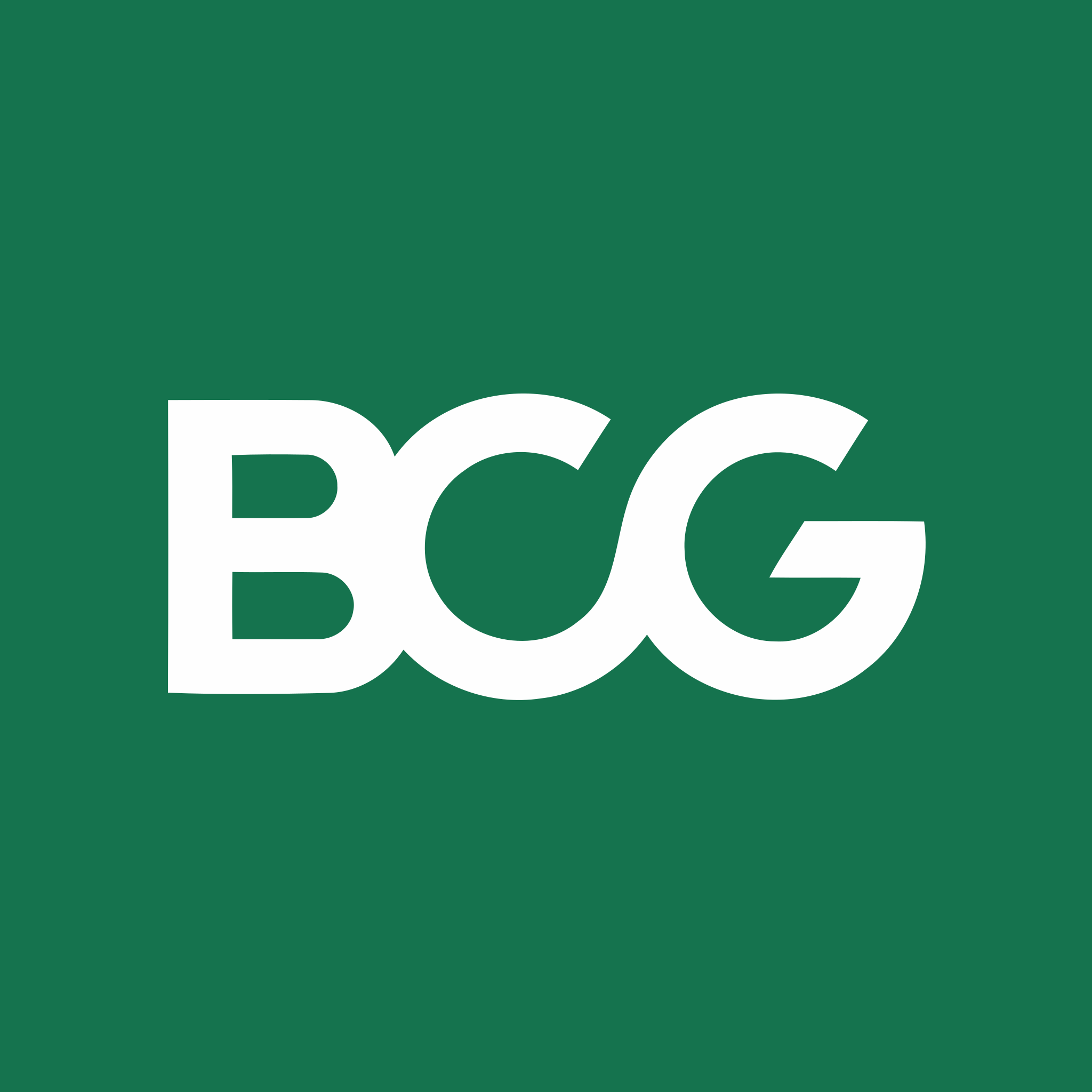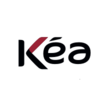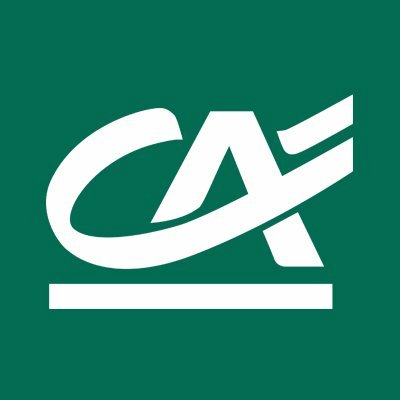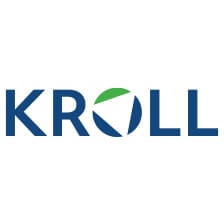Summary of our market study
The French shampoo market is valued at €520 million.
The global shampoo market is estimated at 31 billion USD, with an average annual growth rate of 4%.
Women, who are the main consumers of shampoo, are seeing their frequency of use decline. 15 to 20 million women use shampoo 2 to 3 times a week. 10 to 15 million men use shampoo for normal hair, and 5 to 10 million opt for anti-dandruff products.
The market is dominated by multinationals such as L'Oréal, Henkel and P&G
Supermarkets and hypermarkets dominate with 83% of sales.
Traditional brands face competition from natural and ultra-premium products, often available in perfumeries and parapharmacies.
France's trade balance is in strong surplus.
Global shampoo market players
- L'Oréal Group - Elseve, Ultra Doux by Garnier, Fructis and Dop
- Unilever
- Procter & Gamble (P&G) - Head & Shoulders, Pantene and Herbal Essences.
- Henkel - Schwarzkopf and Syoss.
- Johnson & Johnson - known for its gentle baby shampoos
- Dessange International and Caudalie penetrate more exclusive, high-end markets.
- La Roche-Posay and Avène, belonging respectively to L'Oréal and the Pierre Fabre group, target consumers with sensitive skin
- Léa Nature and Weleda. These brands emphasize environmentally-friendly practices
- Nuoo and Just
to understand this market
Detailed content of our market study
 Inforamtion
Inforamtion
- Number of pages : 35 pages
- Format : Digital and PDF versions
- Last update :
 Summary and extracts
Summary and extracts
1 Market overview
1.1 Definitions and scope of study
Shampoo is a hair care product, generally in the form of a viscous liquid, used for cleansing the hair. Most of the time, these products are prepared by coupling a surfactant - a surfactant that enables liquids to be washed and emulsified with water - with a co-surfactant, which reinforces the action of the main surfactant.
Special shampoos are also available for people with dandruff, color-treated hair, certain hair types, gluten or wheat allergies , or a preference for natural products.
The global shampoo market is expected to grow at a rapid rate of 2.6% per year to 2027 due to the increasing prevalence of hair-related disorders such as dandruff, hair loss, greasy hair, dry hair, itching and many others. These disorders are reinforced by more stressful lifestyles and more polluted environments. Asia-Pacific is the dominant region for shampoos, with almost a third of the global market. In France, the sector is less buoyant, with a slow decline in the market over the last two or three years.
However, there are several very dynamic segments in the French shampoo market. Demand for natural products and ultra-premiums is rising sharply, and these can provide interesting leverage for players wishing to compensate for declining market volumes.
The main players in this market are FMCG groups such as L'Oréal, Henkel and P&G, and retailers such as Leclerc, Carrefour and Intermarché.
1.2 Key figures for the global market
Growth and market size
The global shampoo market is expected to reach $**.* billion in ****, with a CAGR of +*.*% forecast for the period ****-****...
Global shampoo market World, ****-*****, in billions of euros Source: ****
A promising segment
Dry shampoos are also expected to grow over the next few years, reaching $*.* billion in ****, over $* billion more than in ****. They should also account for **% of the **** market.
Dry shampoo market Worldwide, ****-*****, in billions of euros Source: ****
1.3 A market in difficulty in France
Fragrance and toiletries manufacturing market France, ****-****, in billions of euros Source: ****
Despite fluctuations, sales show an overall upward trend, rising from ***.** billion euros in November **** to ***.** billion euros in December ****. However, analysis of the change in value reveals periods of growth and decline, suggesting volatility in consumption patterns or external influences such as changes in price or demand.
1.4 France, a net exporter of shampoos
Shampoos are registered under HS code ****** "Hair preparations; shampoos" in the UN Comtrade nomenclature.
French shampoo exports rose by **% between **** and ****, from $*** million to $*** million. Imports also climbed **.*% from ***.* to ***.* million euros. The coverage rate (***) of this market was ***.*% in ****, which means that France exports around *.* times as much shampoo as it imports.
Foreign trade in shampoo France, ****-****, in millions of euros and in % Source: ****
Shampoos imported into France come almost exclusively from Europe, with Italy alone accounting for a fifth of imports.
Origin of French shampoo imports France, ****, in percent Source: ****
Exports are more fragmented than imports. Europe is once again the most represented country of destination.Germany is the main destination, accounting for **.*% of total French exports.
Destination countries for French exports France, ****, in percent Source: ****
2 Demand analysis
2.1 A strong gender distinction in demand dynamics
Women, leading shampoo consumers despite falling indicators
Usage by gender
While the distribution by sex is homogeneous in the French population, women's shampoos have significantly more users than men's shampoos. This is probably due to the less systematic use of shampoo by male consumers than by female consumers.
Theremain the leading consumers of shampoo in France, and are theand are the object of numerous requests from brands.
Number of shampoo consumers by gender France, ****, in Source: ****
The most popular shampoos for women are traditional hyper and supermarket brands (***). It should also be noted that the classification made by Kantar Media TGI is not entirely relevant, since the "Other" segment was the most cited, meaning that many consumers did not recognize the products they use in the various categories.
Types of shampoo brands preferred by women France, ****, in thousands of users Source: ****
Usage by frequency
Nearly two-thirds of women use shampoo between * and * times a week, with only a quarter using it less frequently and *% using it more regularly. This represents a significant market, since it is possible to estimate that a woman uses shampoo *.* times a week on average (***).
Number of people using women's shampoo, by frequency of use France, ****, in ...
2.2 General determinants and consumption habits
The impact of the pandemic on consumer habits
Successive confinements did little to alter hair care habits, with **. *% of consumers maintaining the same level of attention to their hair. Approximately *.*% of consumers reduced their hair care, motivated mainly by the desire to avoid potentially harmful products. On the other hand, these periods have encouraged Millennials to opt more for natural products (***).
A variety of distribution channels
Poll: Where do you buy your shampoo? France, ****, in % Source: ****
The survey reveals that the majority of French consumers buy their shampoo in supermarkets(***). Specialty stores and pharmacies or parapharmacies account for smaller shares of *. *% and *. *% respectively.
Demand drivers according to consumers
Poll: What do you consider to be the most important hair care issues? France, ****, in % Source: ****
The survey highlights the main hair issues for French consumers in ****, with hair bleaching in the lead(***). Hair loss is also mentioned by **.*% of participants, while **.*% report other problems.
Poll: Why do you take care of your hair? France, ****, average out of * Source: ****
The survey highlights the varied motivations of French consumers for taking care of their hair, with physical results such as the desire to look prettier (***). These results suggest that hair care is perceived not ...
2.3 France's favourite shampoo brands
The graph below is based on OpinionWay's survey of French consumers' favorite brands in March ****. These are respondents' answers to the question "Do you like this or that brand of shampoo?" for each brand, with the percentage corresponding to the proportion of respondents who answered "yes".
Garnier Ultra Doux is the favorite shampoo brand of the French, with over **% of respondents saying they like it. René Furterer is the least popular shampoo brand, with just **% of respondents saying they liked it. This disaffection can be partly explained by the brand's low profile.
French people's favorite shampoo brands France, March ****, in Source: ****
The graph below shows the shampoo brands preferred by respondents. There is a difference in the level of brand appreciation between female respondents and male respondents, as the latter are proportionally more likely to say they like shampoo manufacturers. For Elsève, Timotei, Schwarzkopf, Klorane, Kerastase and René Furterer, the gap between men and women is quite substantial (***), which can be explained by the fact that these brands target, in their communication and in their product ranges, a female clientele as a priority.
The biggest differences (***) and, on average, they are more interested in washing and caring for their ...
2.4 Most popular shampoos in France
The choice of shampoo depends on a number of characteristics, including hair variety, hair color and hair type (***). In addition, shampoo brands tend to offer different products for different genders.
Shampoos for normal hair and color-treated hair are the most widely used shampoos for women, with over *.* million consumers each. Shampoos for dry, damaged and oily hair, as well as mild and anti-dandruff shampoos, are also widespread among consumers (***).
Interestingly, so-called "normal" shampoos are used by only a minority of the population, with women preferring to choose a shampoo specifically adapted to their hair needs.
Number of people using shampoo for women, by type of shampoo France, ****, thousands of people Source: ****
The range of shampoos consumed by men is smaller than that consumed by women. Two categories of men's shampoos stand out: shampoos for normal hair and anti-dandruff products, with ** and * million users respectively. Generally speaking, men's shampoos are less diverse than their female counterparts, reflecting a more concentrated offer around certain flagship products.
Number of people using men's shampoo, by type of shampoo France, ****, thousands of people Source: ****
2.5 Recent trends caused by a tightening of the average budget
Figures that hide the risk of hygiene insecurity?
Poll: Would you say that the current economic context is prompting you to limit and reduce (***) your consumption of hygiene products? France, ****, in Source: ****
The "Hygiene and Precariousness" barometer reveals growing concern about the increase in hygiene precariousness in France. Working-class people and young people are particularly hard hit by the lack of access to basic hygiene products such as toilet paper and toothpaste. This situation is leading to the normalization of renunciation behaviors, such as going without shower gel or shampoo. More and more people are turning to charities to obtain these products.
Poll: Have you ever had to choose between buying food and hygiene products? France, ****, in Source: ****
Despite declines in consumption among women, it is men who respond most favorably to the question "Have you ever had to choose between buying food and hygiene products?", with a rate of **%, compared to **% among women.
2.6 The role of environmental impact in determining demand
The boom in solid shampoos
The market for solid cosmetics is booming, with sales of ** million euros in ****, despite an *.*% fall on **** but a **% increase on ****. Solid shampoos in particular are enjoying strong growth, with *.* million buyers in **** and a penetration rate of *.*%, compared with just *% in ****. Although sales of soaps fell in ****, sales of solid shampoos tripled in one year in supermarkets.
Numerous historic and new brands have invested in this market, particularly in specialist networks and supermarkets. Multiple launches have been observed, with products ranging from shampoos to solid deodorants. These initiatives are supported by growing consumer demand for environmentally-friendly products, which is the main motivation for using solid cosmetics according to a NielsenIQ survey[***].
**% of French consumers said they were ready to use solid hygiene products in **** (***), which represents a significant potential market. Shampoo is one of the products available in solid form, and its development should be rapid over the next few years.
Do you use solid hygiene products or cosmetics? France, ****, in Source: ****
It's also clearly a relatively health-friendly product: the top-ranked personal hygiene product recommended by the **** edition of the ** milluons de consommateurs survey is a powdered shampoo, which isn't entirely surprising: like many ...
3 Market structure
3.1 A concentrated market dominated by L'Oréal
Market share
L'Oréal dominated the shampoo market in **** with its Elseve, Ultra Doux (***). The overall market is therefore concentrated, with six groups accounting for almost three-quarters of sales.
Market share in value of leading hair care brands (***) France, ****, in Source: ****
3.2 Distribution and channels of cosmetics sales
Breakdown
Sales of hair care products account for one-fifth of the market's cosmetics sales, still behind skin care, which dominates the market.
Breakdown of cosmetics sales France, ****, in percent Source: ****
Distribution channels
According to Alioze, supermarkets still dominate the market, accounting for almost **% of sales. However, their influence is diminishing year by year, to the benefit of specialized boutiques, which currently account for *% of sales. Online sales, which are also increasing year on year, currently account for *% of the market.
3.3 The evolution of e-commerce
E-commerce is increasingly favored by the French , as the following graph shows: although the average amount spent has fallen slightly, the number of transactions has risen sharply, from ** to **.
Amount spent on e-commerce per user France, ****-****, in euros/transaction and number of transactions per year Source: ****
In addition, hygiene and beauty products (***) are the *rd most popular type of product for e-commerce users, rising from **.*% of users in **** to **% in ****, as shown in the following graph:
Products and services purchased online France, ****, as a percentage of Internet users Source: ****
3.4 Production, number of plants and geographical breakdown
We use NAF code **.**Z "retail sale of perfumes and beauty products in specialized stores", which includes shampoos, to obtain an order of magnitude for the evolution of French production and the number of establishments selling shampoos.
Size of the perfume and toiletries manufacturing market France, ****-****, in billions of euros Source: ****
The chart shows the evolution of the perfume and toiletries manufacturing market in France from **** to ****, measured in billions of euros. There is a general upward trend in sales, from **.*** billion euros in **** to **.*** billion euros in ****. However, a significant drop is observed in ****, which could be attributable to disruptions caused by the COVID-** pandemic, underlining the industry's sensitivity to external factors.
Number of establishments and employees in the perfume, cosmetics, toiletries and personal care retail trade France, **** to ****, in units Source: ****
The number of establishments rose by *** stores between **** and ****, an increase of **.*%. The number of employees has followed the same trend, increasing by **% in ** years.
Ile-de-France is the region with the highest number of establishments (***). Next come Auvergne-Rhône-Alpes and PACA, with *** and *** establishments respectively.
Source: ****
The overseas regions not shown on the map - Réunion, Martinique, Gadeloupe and French Guiana - have **, **, ** and ** establishments ...
4 Offer analysis
4.1 Shampoo composition and product types
Shampoo composition is governed by the International Nomenclature of Cosmetic Ingredients (***).
Demineralized water is the main ingredient, accounting for **-**% of the composition and acting as a solvent. Washing agents, between **% and **% of the composition, dissolve the grease entrained with the water. Shampoos also contain foaming agents (***) and preservatives, mandatory to prevent bacterial proliferation. Other emulsifying agents and additives, such as silicone, oils and citric acid, can also be found in the composition of shampoos.
In addition to the so-called "classic" shampoos composed of water, detergents, conditioners and preservatives, there are also dry shampoos. These are a mixture of powders that absorb sebum and trap dirt, which are then brushed out of the hair. They generally come in aerosol form. Dry shampoos are composed mainly of corn starch and rice starch.
Shampoo varieties are classified according to consumers' hair type and texture. Brands generally distinguish four hair textures:
Straight hair Wavy hair Curly hair Frizzy hair
Shampoos are also classified by hair color:
Blond hair Brown hair Red hair Colored hair
Lastly, they are sorted according to hair characteristics, usually :
Dry hair Normal hair Oily hair
There are also medicated shampoos for damaged, brittle hair, anti-dandruff shampoos (***).
4.2 Highly variable prices on the shampoo market
On average, a shampoo costs between €* and €*.
The list below shows the prices of shampoos offered by various brands on the Nocibé platform:
Shampoo prices vary widely, as the above list shows.
Generally speaking, shampoos sold in supermarkets range from €* per liter for private labels to over €*** per liter for premium products, such as the pharmaceutical brand Ducray and its anti-dandruff shampoo.
In pharmacies and parapharmacies, prices can range from €** a liter with the Laino brand, to over €*** a liter with the Leonor Greyl brand. The formats used in pharmacies and hair salons vary, but larger formats (***) are more common, and rarer on supermarket shelves.
Finally, retailers can drive prices down via their own brands, such as Auchan's Casmia and Leader Price's Sooa.
4.3 Supply trends
New product launches
After successfully launching deodorants, young startup Respire is now tackling the shampoo market with the launch of a solid shampoo enriched with plant oils and vegan ingredients. The product is made from **% natural ingredients. The launch of this product is particularly revealing of the demand for this type of eco-responsible shampoo, since it was by questioning its community that Respire decided to create this particular product. The product has been available in physical stores, at Monoprix and Sephora, since early ****. [***]
The big brands are not to be outdone, as L'Oréal has created a plastic shampoo packaging made from captured and recycled carbon emissions, in partnership with Total and startup LanzaTech. Through a biological process, LanzaTech captures industrial carbon emissions and converts them into ethanol. Total then converts this ethanol into ethylene using a dehydration process developed with IFP Axens. Total then polymerizes the ethylene to obtain polyethylene (***), which has the same properties and technical specifications as PE made from petroleum. L'Oréal then uses this PE to manufacture packaging for its products, such as shampoo bottles.
L'Oréal's ambition is to eventually market its shampoo bottles packaged in this sustainable material. The first sales are scheduled for ...
5 Regulations
5.1 European legislation
Regulation ****/**** of the European Parliament dated November **, **** governs cosmetic products within the European Union. This law was created to prevent and protect consumers from potential health hazards. It imposes four criteria before cosmetic products can be marketed:
Each product must have a Product Information File (***), containing all analyses, tests, manufacturer's documents, composition details, etc. ; Each product requires a safety report from a toxicologist (***), who ensures that the product complies with the standards described in the regulation, and that it is safe for health; Each product is associated with at least one responsible person in the European Union; The product must be registered on the CPNP (***) and doctors/hospitals have access to all the information they need in the event of a problem with the product.
The article also defines a cosmetic product as: "any substance or mixture intended to be placed in contact with the superficial parts of the human body (***) or with the teeth and oral mucous membranes, with a view, exclusively or mainly, to cleaning them, perfuming them, modifying their appearance, protecting them, keeping them in good condition or correcting body odors".
5.2 Endocrine disruptors
Some shampoos and hair care products may contain endocrine disruptors. These molecules act on the hormonal balance of numerous species, and are accused of undesirable health effects.
The UFC Que choisir? association has launched an application called Quelcosmetic? which lists all cosmetics products. Users can check their product simply by scanning the barcode.
Faced with these endocrine disruptors, the European Commission has adopted a strategy of communication and initiative-taking with the aim of reducing the population's exposure to these substances.
However, a report presented in April **** in the same European Commission claims that the latter does not have the power of its ambitions, as current regulations are not sufficient to reduce the use of these substances in products, particularly cosmetics.[***].
5.3 Packaging legislation
France
A decree published on April *, **** imposes a minimum proportion of reused packaging to be placed on the market each year, in accordance with Article L. ***-* of the Environmental Code as amended by the AGEC Act. from January *, ****, this decree will apply to packaging manufacturers, producers, importers, distributors and other players placing products using packaging on the French market, pursuant to Article ** of Law no. ****-*** of February **, **** on the fight against waste and the circular economy.
From January *, ****, the provisions of this decree will apply to the packaging of products for which the specifications of quality and origin identification signs prohibit the reuse or re-utilization of their packaging.
To comply with these new requirements, producers responsible for placing more than ten thousand units of packaged products on the market per year, or approved packaging eco-organizations, will have to respect a minimum proportion of reused or reused packaging. This proportion varies according to producers' declared annual sales, with percentages staggered up to ****[***].
European Union
Possible regulatory changes within the European Union could affect the use of packaging in the hospitality sector. According to information reported by BFM TV on November **, ****, an ambitious reform is envisaged concerning packaging for cosmetics and ...
6 Positioning the players
6.1 Segmentation
- Unilever Groupe
- Henkel
- Dessange International
- Vichy
- NAOS Bioderma
- La Roche-Posay
- Eau Thermale d'Avène (Pierre Fabre Groupe)
- Nuoo (Haco)
- Juste
- Horace
- Eugène Perma
- Kérastase (L'Oreal)
- Garnier (L'Oréal)
- Laboratoire Native- Alès Groupe (marques Phyto, Lierac, Roger & Gallet, Jowae)
- Leonor Greyl
- Dop (L'Oréal)
- Head & Shoulders (Procter & Gamble)
- Cadum (L'Oréal)
- Cristophe Robin
- Rogé Cavaillès
- Schwarzkopf (Henkel Groupe)
- Unbottled
- Lamazuna
- Les savons de Joya
- Le Petit Marseillais (Johnsons & Johnson Santé Beauté)
- Umaï
- Loubaio
- 900.care
- Végétalement Provence
All our studies are available online in PDF format
Take a look at an example of our research on another market!
 Choosing this study means :
Choosing this study means :
Access to more than 35 hours of work
Our studies are the result of over 35 hours of research and analysis. Using our studies allows you to devote more time and added value to your projects.
Benefit from 6 years' experience and over 1,500 industry reports already produced
Our expertise enables us to produce comprehensive studies in all sectors, including niche and emerging markets.
Our know-how and methodology enable us to produce reports that offer unique value for money.
Access to several thousand articles and paid-for data
Businesscoot has access to all the paid economic press as well as exclusive databases to carry out its market research (over 30,000 articles and private sources).
To enhance our research, our analysts also use web indicators (semrush, trends, etc.) to identify market trends and company strategies. (Consult our paying sources)
Guaranteed support after your purchase
A team dedicated to after-sales service, to guarantee you a high level of satisfaction. +44 238 097 0676
A digital format designed for our users
Not only do you have access to a PDF, but also to a digital version designed for our customers. This version gives you access to sources, data in Excel format and graphics. The content of the study can therefore be easily retrieved and adapted for your specific needs.
 Our offers :
Our offers :
the shampoo market | France
- What are the figures on the size and growth of the market?
- What is driving the growth of the market and its evolution?
- What is the positioning of companies in the value chain?
- Data from several dozen databases
Pack 5 études (-25%) France
- 5 études au prix de 74 €HT par étude à choisir parmi nos 1200 titres sur le catalogue
- Conservez -25% sur les études supplémentaires achetées
- Choisissez le remboursement des crédits non consommés au terme des 12 mois (durée du pack)
Consultez notre catalogue d’études sectorielles











